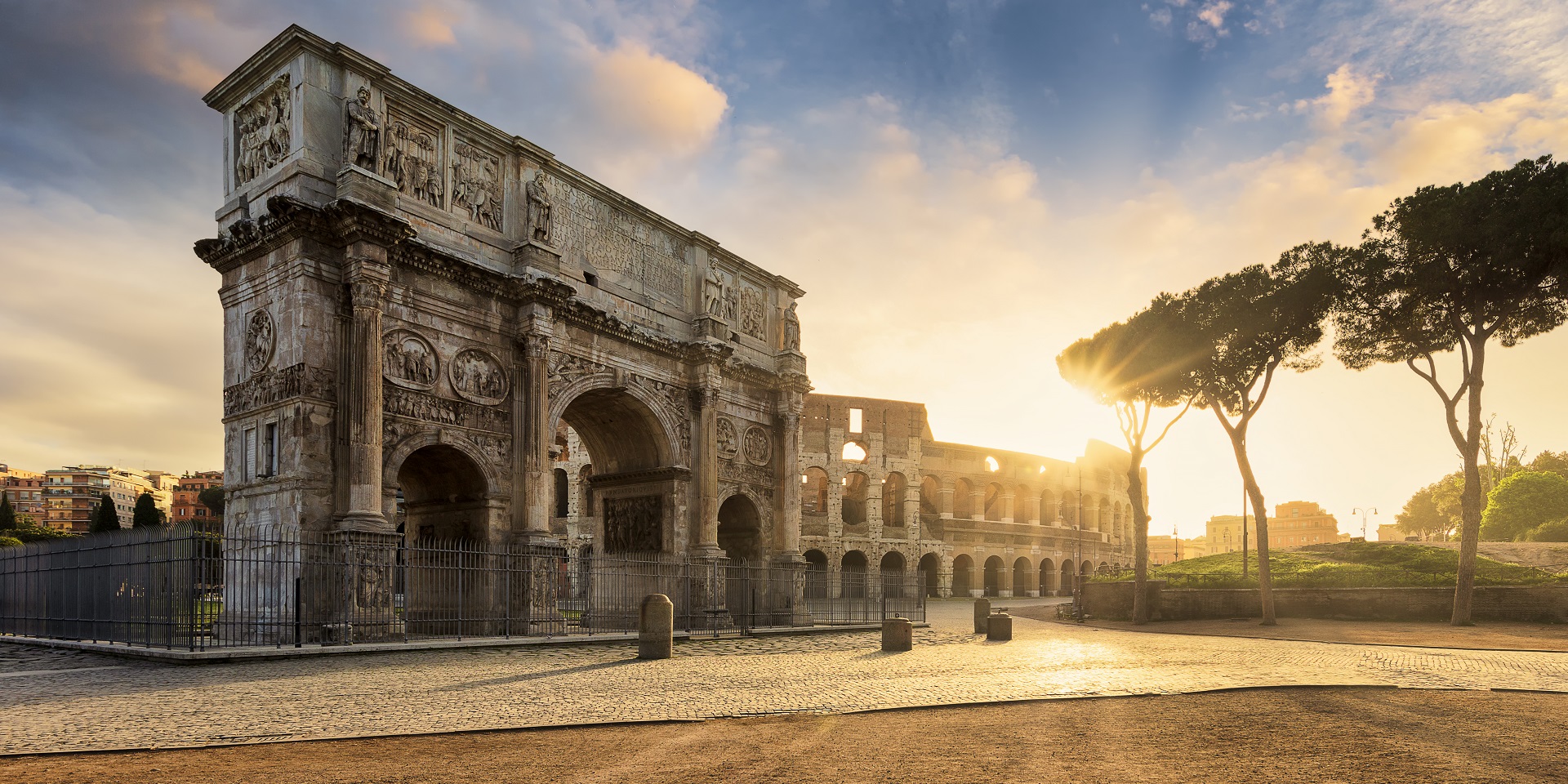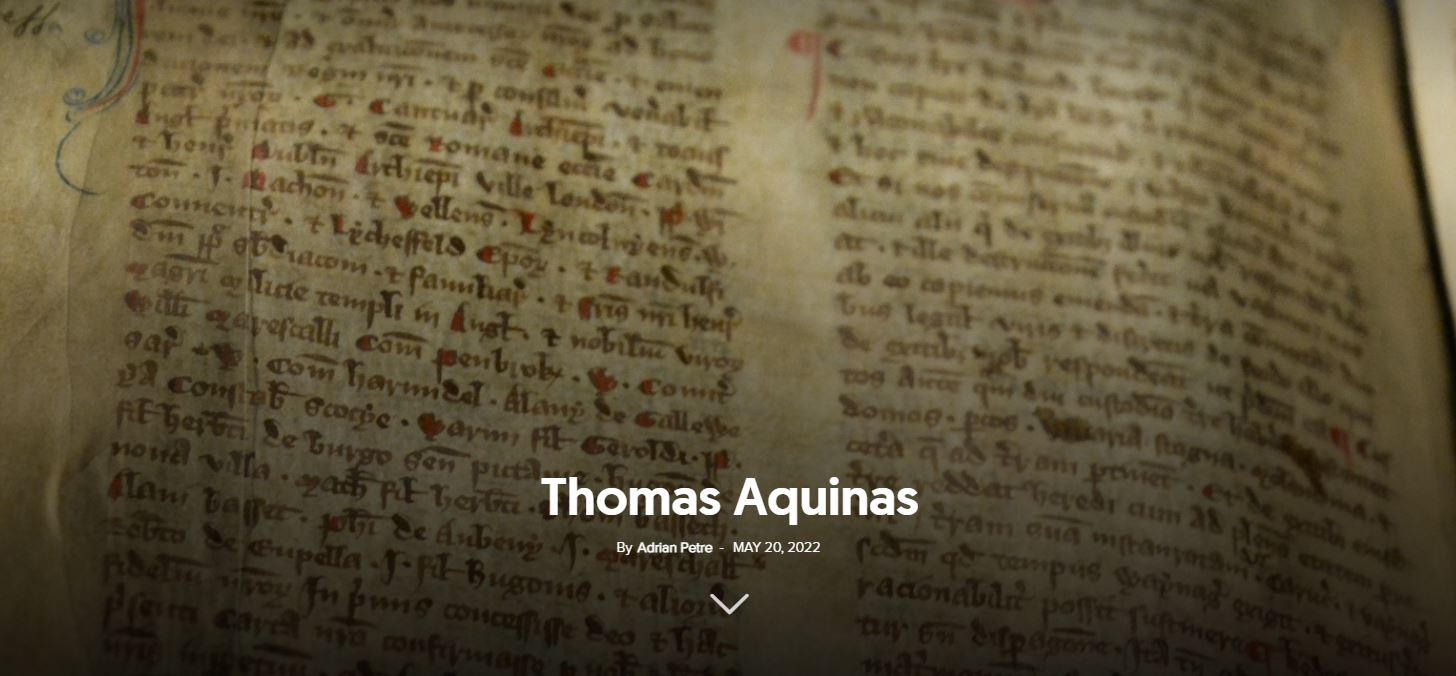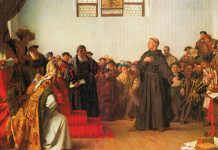In Milan, in 313, Constantine participated in his sister’s wedding to Licinius, where he also signed the Edict of Milan. This decree, which officially recognised and legalised Christianity, marked the symbolic end of Diocletian’s era of persecution while defining Constantin’s religious policies.
The thirty years of Emperor Constantine’s reign brought about more changes to Christianity in terms of its status, beliefs, and practices than any other period in the first three centuries of the Christian era. When the young Constantine ascended to the throne in 306, the Christian religion bore visible traces of the bloody persecutions initiated by some of his predecessors. The third century had seen a succession of emperors who subjected Christians to torment, but the beginning of the next century was to bring an incredible reversal of fortunes.
A cross in the sky and an empire in flux
The son of Constantinus Chlorus, Constantine displayed a special interest in the Christian religion after his renowned victory over his rival in the western part of the Roman Empire, Maxentius, in the Battle of the Milvian Bridge in 312. Prior to the battle, Constantine experienced what some ancient historians referred to as a “vision.” The most well-known account comes from Bishop Eusebius of Caesarea, a Church historian and author of a work on the life of Constantine. Eusebius claims that the emperor himself recounted the incident, stating that before the battle, he saw a luminous cross in the sky with the inscription, “By this, you shall conquer!”
Historians’ opinions are divided regarding the authenticity of this vision. For instance, H.A. Drake emphasises that Eusebius himself wrote that the emperor recounted the event “long after it had occurred” and that during that time, there were other stories circulating about a vision of Constantine in which Apollo, the deity associated with solar worship, was involved. What is certain is that the day after the battle (October 29), upon entering Rome, Constantine headed directly to the imperial palace instead of the Capitoline Hill, where pagan altars were prepared for sacrifices in celebration of his victory. The emperor justified this gesture by stating that he had received a special sign from the God of the Christians. Shortly thereafter, he initiated the first measures to promote Christianity.
Although he desired the conversion of as many of his subjects to Christianity as possible, Constantin “never proceeded to an active persecution of the pagan religions.”[1] However, he made efforts to discourage the worship of the ancient gods of Rome. For instance, an edict issued during the early years of his reign stated that followers of the Roman gods could “continue the rituals of an outdated illusion”[2] but they were not allowed to compel Christians to participate in the worship of these gods.
Nevertheless, certain pagan temples were closed on the grounds that the rituals performed in these sanctuaries contradicted Christian moral standards. Additionally, the use of public funds for the construction of pagan temples was prohibited. Christian soldiers were required to attend religious services on Sundays, while pagan soldiers were obliged to recite a monotheistic prayer, even if it was not directed towards the Christian God. In the year 321, Sunday was declared a mandatory day of rest for all subjects.
Constantine encouraged the conversion of Jews to Christianity but discouraged, under the threat of punishment, the conversion of Christians to Judaism. He prohibited crucifixions and gladiatorial fights. Laws were also enacted to protect the lives of children and the rights of celibates (who faced discrimination compared to the married), influenced by how the Christian religion regarded the human being as an individual. Roldanus notes that these measures “had no immediate effect” but that “the result, nevertheless, was a gradual humanisation of society.”[3] Constantine ruled convinced that he was an instrument in the hands of God, destined to save the empire and Christianize it, as well as to maintain the unity of the Church and cleanse it of any heresy.
The Council of Nicaea
Advised by Bishop Ossius of Cordoba, Constantine convened the first Ecumenical Council of the Church in Nicaea (now Iznik, Turkey) in 325. The emperor had previously involved himself in the internal affairs of the Church, both at the Lateran council (in 313) where the Donatist schismatic movement was condemned, and at the Council of Arles (in 314). Dissatisfied with the outcomes of these two councils, Constantine personally made decisions he deemed necessary to maintain order in the empire, even if these concerned the Church.
“The first ecumenical council of the Church was an invention of the first Christian emperor and it was supposed to come up with his wishes for unity and peace,”[4] Roldanus says. Summoned in Nicaea, over 300 Christian bishops confronted the Arian heresy, promoted by Arius, a presbyter from Alexandria, Egypt. A former disciple of Lucian of Antioch, Arius argued that Jesus Christ did not exist eternally but was created by God the Father and was therefore inferior to Him. Despite being excommunicated by the Church, Arius found significant support among Christian leaders of the time.
The internal disagreements within the Church deeply dissatisfied Constantine, who wrote to Arius and his opponents of the heresy in 324, urging them to find a swift solution to what the emperor considered a matter of minor importance but significant enough to cause confusion among the laity. “Give me back my quiet days and carefree nights,”[5] wrote Constantine in his letter. However, a solution did not arise, and tensions stemming from Arianism deepened. Consequently, the emperor decided to convene the Christian leaders in Nicaea, and in his opening address at the Council, he spoke to the bishops about the need for peace and how internal dissensions were worse than war or catastrophes.
Although he did not preside over the council, Constantine was present during the debates and intervened repeatedly. The Council condemned the Arian heresy and affirmed that the nature of Christ is consubstantial with the nature of God the Father. In Nicaea, the Nicene Creed was formulated, which would later be revised during the Council of Constantinople, remaining unchanged to this day. Additionally, in Nicaea, the delegates established the rules for determining the date of the celebration of Easter. Historian Peter Brown notes that through the organisation of this council, Constantine “allowed the Christian Church to define itself for the first time as the privileged possessor of a universal law.”[6]
A controversial figure
Constantine remains a controversial figure in both church and secular history. While revered as a saint by the Orthodox Church (with an annual celebration on May 21st), some historians criticise his conversion as more of a politically opportunistic move than a genuine interest in Christianity. As early as the 5th century, certain Christian historians hastily labelled him “isapostolos,” meaning “equal to the apostles.” In a similar vein, historian Paul Keresztes regards Constantine as “a truly great Christian emperor and a genuine apostle of the Christian Church.”[7]
The favourable image that the Church has painted and preserved of Constantine explains why it was wished that later emperors would become “new Constantines.” Throughout the eleven centuries of Byzantine history, there were just as many emperors who bore the name “Constantine.” However, there are also many[8] who discredit Constantine as a religious figure. Historian Joseph Vogt, one of the most renowned experts in Roman history of the last century, said that Emperor Constantine “remained alien to the greater depths of Christian belief.” Alistair Kee, an emeritus professor of religious studies at the University of Edinburgh, believed that Constantine’s religion was not profound, even though he was “fanatically committed to it.” British academic and theologian Henry Chadwick observed that “his [Constantine’s] understanding of Christian doctrine was never very clear.” Critics of Constantine point out that he promoted the cult of the Sun God alongside Christianity, and coins bearing the image of this deity were minted in the empire until 322.
A reign with far-reaching impact…
Persecuted in preceding centuries, the Church made a decisive step in its evolution during Constantine’s reign. The emperor’s patronage transformed the Christian Church “from a persecuted minority cult into an established majority religion and the pagan state of classical antiquity evolved into a Christian empire.”[9] This shaped its beliefs and practices to such an extent that, as historian Charles Matson Odahl says, the Church was later prepared to withstand barbarian invasions and the political developments of Late Antiquity and the Middle Ages.
Constantine’s tolerance towards pagan religions (compared to the policies of his predecessors towards Christians) did not involve coercive measures against pagans. However, his promoted policies paved the way for the decline of paganism. While not as devoted to Christianity, Constantine’s successors somewhat followed in his footsteps, culminating in the legal exclusion of pagan worship in 391.
Opinions may differ on the extent to which political interests merged with religious concerns during Constantine’s reign. Nevertheless, his legacy, passed down to Eastern and Western churches, extended its influence to “the countries of modern Europe and to their political and cultural offshoots across the globe.”[10] According to Odahl, the concepts of imperial theocracy among Byzantine emperors and regal theocracy among Western European kings were influenced by the politico-religious role assumed by Constantine.
Constantine’s intervention in the Arian controversy helped the Church in defining its doctrines and formulating a statement of faith that has essentially endured to this day. The process of defining the canon of the New Testament was influenced by the emperor’s support for the multiplication and dissemination of biblical manuscripts, while the extensive construction of churches solidified a tradition whose architectural influences are still felt today.
Evaluating Constantine should not be based on what he failed to achieve (there are critics who reproach him for not achieving a complete break with the old imperial customs), but rather on what he accomplished, marking a turning point in the history of Rome and the Church with far-reaching effects in the centuries that followed.



















